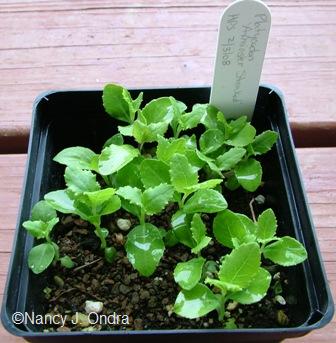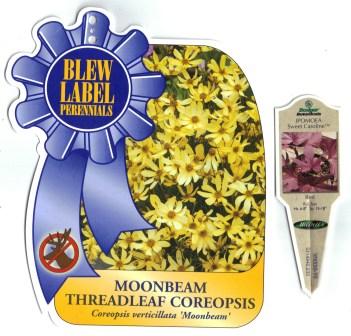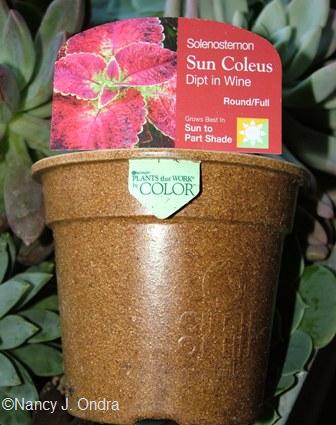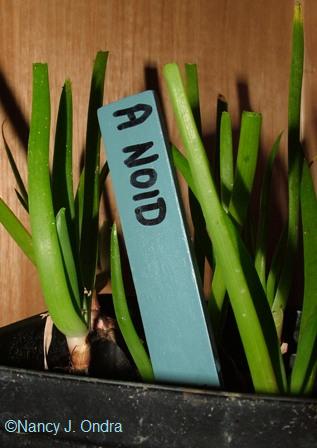Figuring out how to handle labeling is one of those ever-puzzling aspects of gardening. Do you keep the tags your plants come with, filling your garden with dozens or hundreds of bits of plastic? Do you replace them with something prettier or more creative? Do you tape them into a special garden notebook, so you can keep track of where all of your plants came from, how they perform, and how you take care of them? Or do you simply toss the labels in the trash as soon as you get the plants in the ground?
For me, the answer to all of these questions has, at some point, been “yes.” When I first started gardening, every label went into the ground with its corresponding plant, just as it was in the pot. Having the labels visible certainly made it easy to refer to them when trying to learn the plant names.
But after a few seasons, I caught on to several disadvantages: The exposed labels tend to fade quickly, making them useless; they’re very prone to getting pushed or raked out of the garden, so they easily get lost or broken; and they’re generally just plain awful-looking.
So then I started exploring other types of labels. The metal hairpin-type labels tend to be sturdier, but they’re also way too easy to trip over, step on, or pull out with a rake. (I do like the metal hanging labels for trees and shrubs, but I seem to have a knack for attaching them to parts that later need to be pruned off, and it’s a bother to have to have to find and then reattach them.) Pre-made wooden, stoneware, slate, or terra cotta labels are more decorative, but they’re usually limited to the most basic names: do you really need a label that simply says Basil or Sedum? I must admit to being fond of some of the sillier ones, though, such as “Plantus unknownus,” “Twigga mortis,” or the ever-appropriate “I Don’t Remember Planting This.”
For many years, I was smitten by the idea of taping the labels into a notebook for easy record-keeping, though my results were somewhat haphazard. Eventually, the labels piled up much faster than I could add them, and I kind of lost interest when it got to the point that some of the plants had died before I got around to making notes on them.
And then, there were seasons when I tossed most, if not all, new labels. I figured I didn’t really care what the names were; I just liked how the plants looked. (That approach makes sense until you want to buy more of a plant you really like and can’t remember what it is or where you bought it.) And then there’s the ill-fated “Oh, I’ll remember what this is.” Oh no, you won’t; trust me.
 Nowadays, I use a combination of approaches. White plastic labels are my must-have for seed-starting. When I plant out annuals and tender perennials, I toss all of the labels for the year into an empty pot, so I can easily sort through them out later if needed. For perennials, I keep the plastic tag but stick it all the way into the ground, so it’s safe and not likely to fade. How do I find it later? I always put it on the side closest to the front edge of the bed or border. If you’re not directionally challenged, you might prefer to always bury the labels on the north side of the plant, or else use some other consistent placement that you’ll remember.
Nowadays, I use a combination of approaches. White plastic labels are my must-have for seed-starting. When I plant out annuals and tender perennials, I toss all of the labels for the year into an empty pot, so I can easily sort through them out later if needed. For perennials, I keep the plastic tag but stick it all the way into the ground, so it’s safe and not likely to fade. How do I find it later? I always put it on the side closest to the front edge of the bed or border. If you’re not directionally challenged, you might prefer to always bury the labels on the north side of the plant, or else use some other consistent placement that you’ll remember.
Along with various label materials, I’ve experimented with various kinds of marking tools: pencils, ballpoint pens, paint pens, Sharpies, and supposedly fade-resistant nursery marking pens. The hands-down winner for me has always been ordinary pencil: it’s perfect for all but the shiniest plastic and wooden tags.
 One of the greatest innovations for plant record-keeping has to be the digital camera. It’s so easy to take a picture of the label right against the plant, and then of the plant in the garden, so you have a visual record of the name and where the plant is growing. Usually, these photos are more practical than pretty, so I drag all of the ID images into a separate folder. (If you’re really organized, you could make subfolders for each garden area.) What a blessing this is when you’re going through a whole year’s worth of images, trying to remember what’s what! This way, LOLAs (lost labels) are pretty much a thing of the past. (Unfortunately, there’s still no easy answer for plants acquired as NOLAs [no labels] or NOIDs [no ID].)
One of the greatest innovations for plant record-keeping has to be the digital camera. It’s so easy to take a picture of the label right against the plant, and then of the plant in the garden, so you have a visual record of the name and where the plant is growing. Usually, these photos are more practical than pretty, so I drag all of the ID images into a separate folder. (If you’re really organized, you could make subfolders for each garden area.) What a blessing this is when you’re going through a whole year’s worth of images, trying to remember what’s what! This way, LOLAs (lost labels) are pretty much a thing of the past. (Unfortunately, there’s still no easy answer for plants acquired as NOLAs [no labels] or NOIDs [no ID].)
 Some final thoughts on labels – specifically about the proliferation of plastic picture tags. I totally get that these tags can be handy: you have some idea of the flower color, which is handy if the plant isn’t in bloom, and it’s helpful to have details on the height and preferred growing conditions right at hand. But is there really any point to having a picture of the leaves on the tag for a foliage plant, such as coleus? Seems like overkill to me. And goodness, those tags seem to be getting larger and larger; in fact, it’s not unusual for them to be even bigger than the plants themselves! (Though, as anyone who has worked in a garden center can tell you, there are always customers who can pick up a plant with a tag as big as a baby’s head and ask “What is this?”)
Some final thoughts on labels – specifically about the proliferation of plastic picture tags. I totally get that these tags can be handy: you have some idea of the flower color, which is handy if the plant isn’t in bloom, and it’s helpful to have details on the height and preferred growing conditions right at hand. But is there really any point to having a picture of the leaves on the tag for a foliage plant, such as coleus? Seems like overkill to me. And goodness, those tags seem to be getting larger and larger; in fact, it’s not unusual for them to be even bigger than the plants themselves! (Though, as anyone who has worked in a garden center can tell you, there are always customers who can pick up a plant with a tag as big as a baby’s head and ask “What is this?”)
 The problem with all of these plastic labels is more than an aesthetic issue; it’s also an environmental concern. Think of all the energy and resources that go into making them, and all the space they take up in landfills. The nursery industry is starting to use biodegradable pots (such as the one at left), which is great. But it almost seems pointless when they’re designed to be used with these relatively large picture tags made out of regular plastic. If we can have biodegradable pots, why not biodegradable labels? A Google search brought up a few references to plastics that could be used for such labels (here’s one), but it sure would be great to see more of them, don’t you think?
The problem with all of these plastic labels is more than an aesthetic issue; it’s also an environmental concern. Think of all the energy and resources that go into making them, and all the space they take up in landfills. The nursery industry is starting to use biodegradable pots (such as the one at left), which is great. But it almost seems pointless when they’re designed to be used with these relatively large picture tags made out of regular plastic. If we can have biodegradable pots, why not biodegradable labels? A Google search brought up a few references to plastics that could be used for such labels (here’s one), but it sure would be great to see more of them, don’t you think?
Well, enough from me; now it’s your turn! Want to tell us how you deal with the whole issue of keeping track of your plants? Write a post on anything related to plant labels or garden record-keeping on your own blog and leave a link here, or jot down your thoughts in a comment below. If you’ve written about the topic in the past, those links are equally welcome; it’s not necessary to create a new post to participate.
At the end of the month, I’ll gather all of the links into one summary post for easy reference. If you’re interested in checking out previous GBD Workshops, you can find them here:
Paths and Walkways
Fences and Walls
Arbors and Pergolas
Color in the Garden
Container Plantings
Front-Yard Gardens
Stone in the Garden
Decks, Porches, and Patios
Garden Whimsy
Trellises and Screens
Water in the Garden
Sheds and Outbuildings
Incorporating Edibles
Kids in the Garden


